Score breakdown
Things we like
- Quick charging capability
- Vehicle-to-Grid technology
- Intuitive hybrid settings/controls
- Smooth and quiet urban ride
Not so much
- Pricing still out of reach for many
- Very thirsty on engine power alone
- Busy suspension on country roads
- Small boot space
Mitsubishi has had great success around the world with the plug-in hybrid versions of its Outlander medium SUV, and now that technology is available in the smaller Eclipse Cross.
Despite attracting a substantial premium over the conventional petrol versions, the Eclipse Cross PHEV is one of the more affordable electrified SUVs.
We’ve put the mid-spec Eclipse Cross Aspire through its paces and explored its design, features and plug-in hybrid system to see if it represents good value for anyone seeking the benefits of low-emissions driving.
What is the Mitsubishi Eclipse Cross Aspire PHEV like to live with?
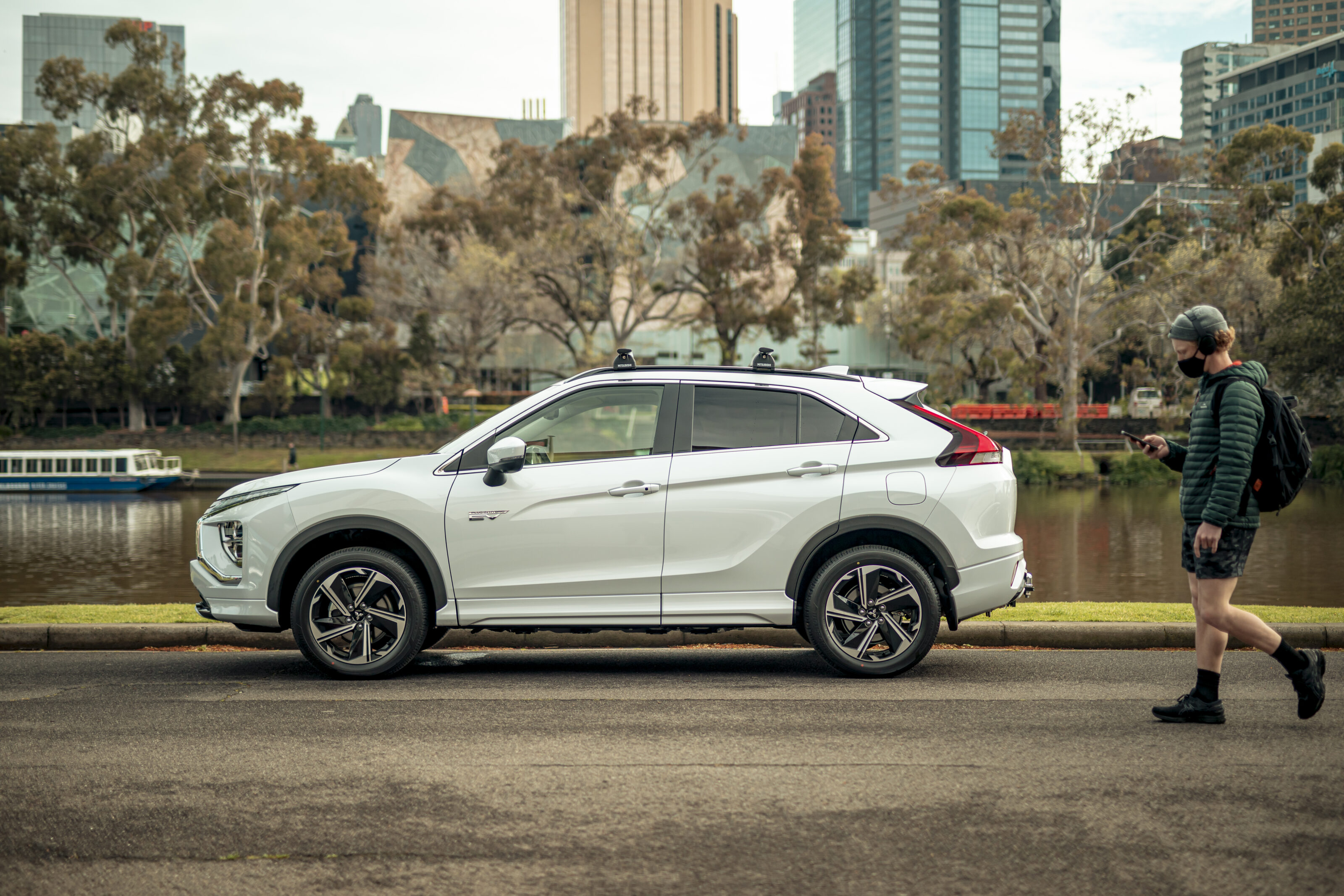
Plug-in hybrid variants of the Eclipse Cross are priced from $46,490 before on-road costs for the entry-level ES, with this mid-spec Aspire retailing for $49,990 + ORC, which is $4000 less than the range-topping Exceed.
This is about $15,000 more than the two-wheel-drive petrol Aspire and, all-wheel-drive hybrid powertrain aside, the two are almost identically equipped.
If you’re not too familiar with the Eclipse Cross, this is the newest model in Mitsubishi’s local line-up and was first introduced here at the end of 2017.
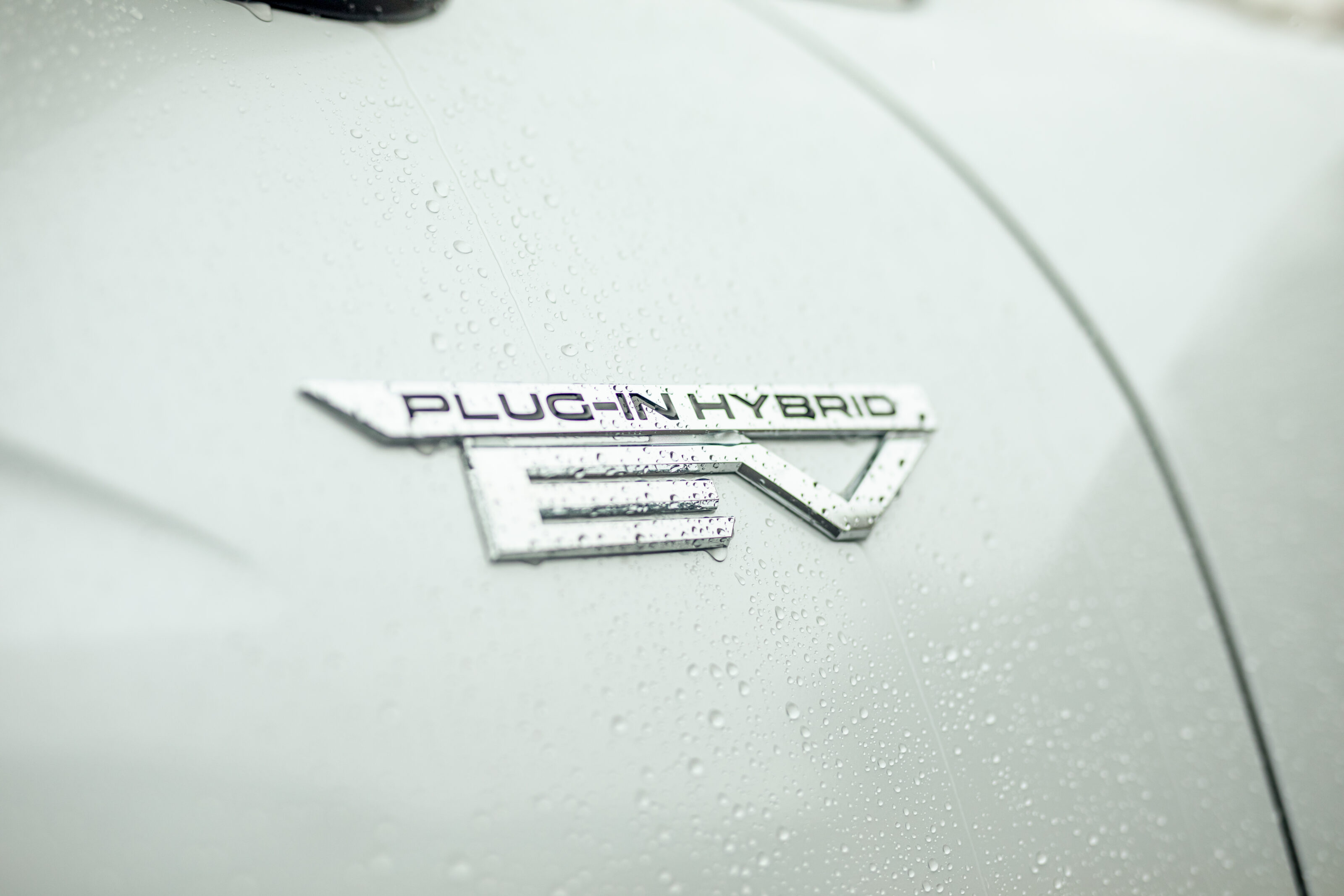
The Eclipse Cross recently underwent a facelift that brought a fresh front end with revised grille treatment and sleeker headlights.
What hasn’t changed is the origami-like styling along the side, including the chiselled rising hipline that I reckon will date pretty quickly.
On the plus side, Mitsubishi redesigned the tailgate to look more conventional than the original version that featured a split rear screen with a spoiler going across the middle that looked a little naff and hampered rear vision. This is complemented by new vertical tail-lights that rise up to the roof spoiler.
Another change made during the facelift was extending the body by 14cm and removing the rear seat sliding function as this extra length more or less results in a combination of the pre-update version’s largest boot and maximum legroom settings.
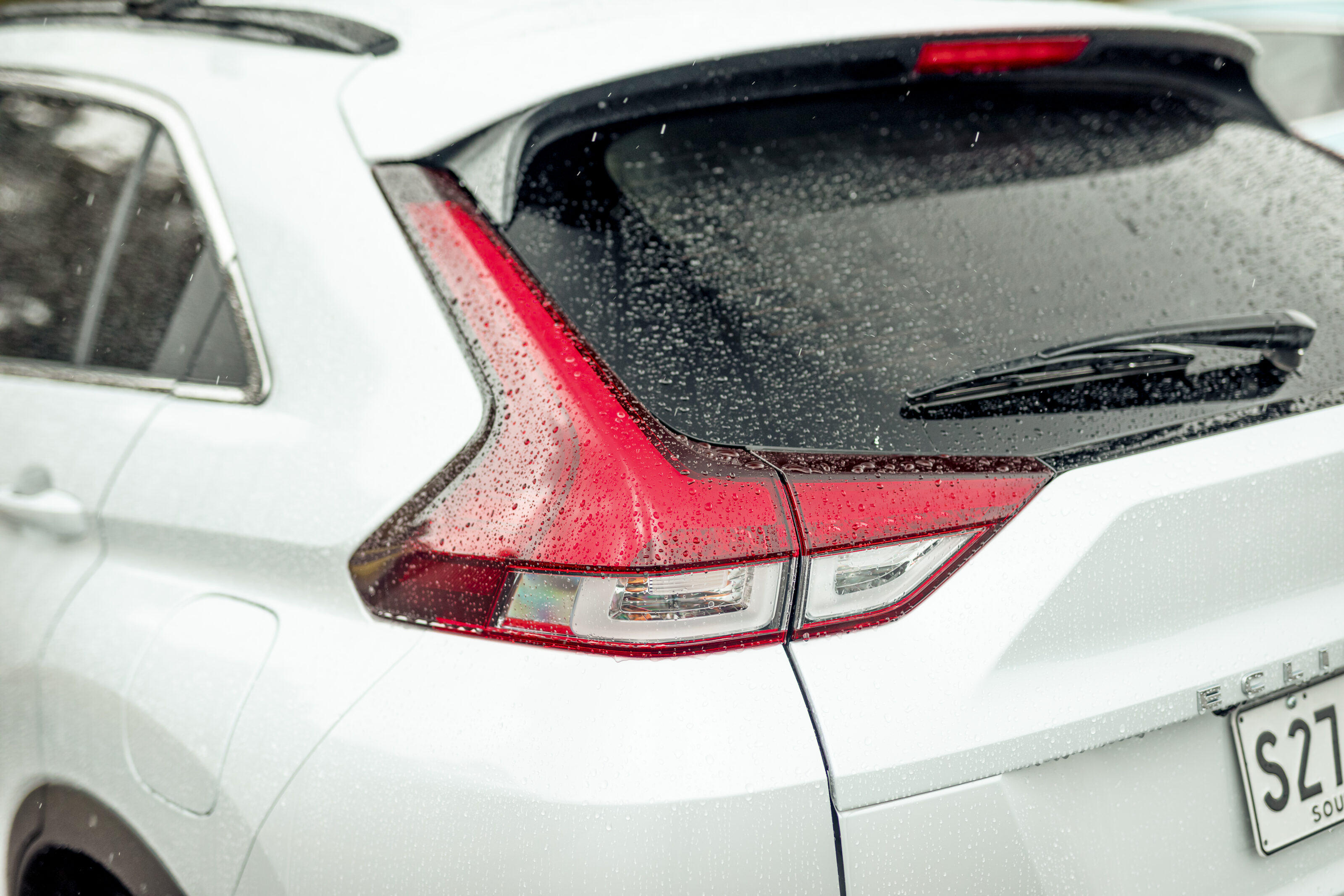
Inside, the updated Eclipse Cross gained a slightly bigger 8.0-inch touchscreen than before, located a little closer to the driver making it easier to operate.
The fiddly touchpad controller was removed in favour of physical volume and tuning knobs, which are easier to use but look kind of cheap – like the caps on mini liquor bottles.
The cabin looks attractive enough, with plenty of faux metal and piano black bright spots. The top of the dashboard and front doors are soft to touch but there are hard plastics everywhere else.
It recently underwent a facelift that hasn’t changed the origami-like styling along the side, including the chiselled rising hipline that I reckon will date pretty quickly.
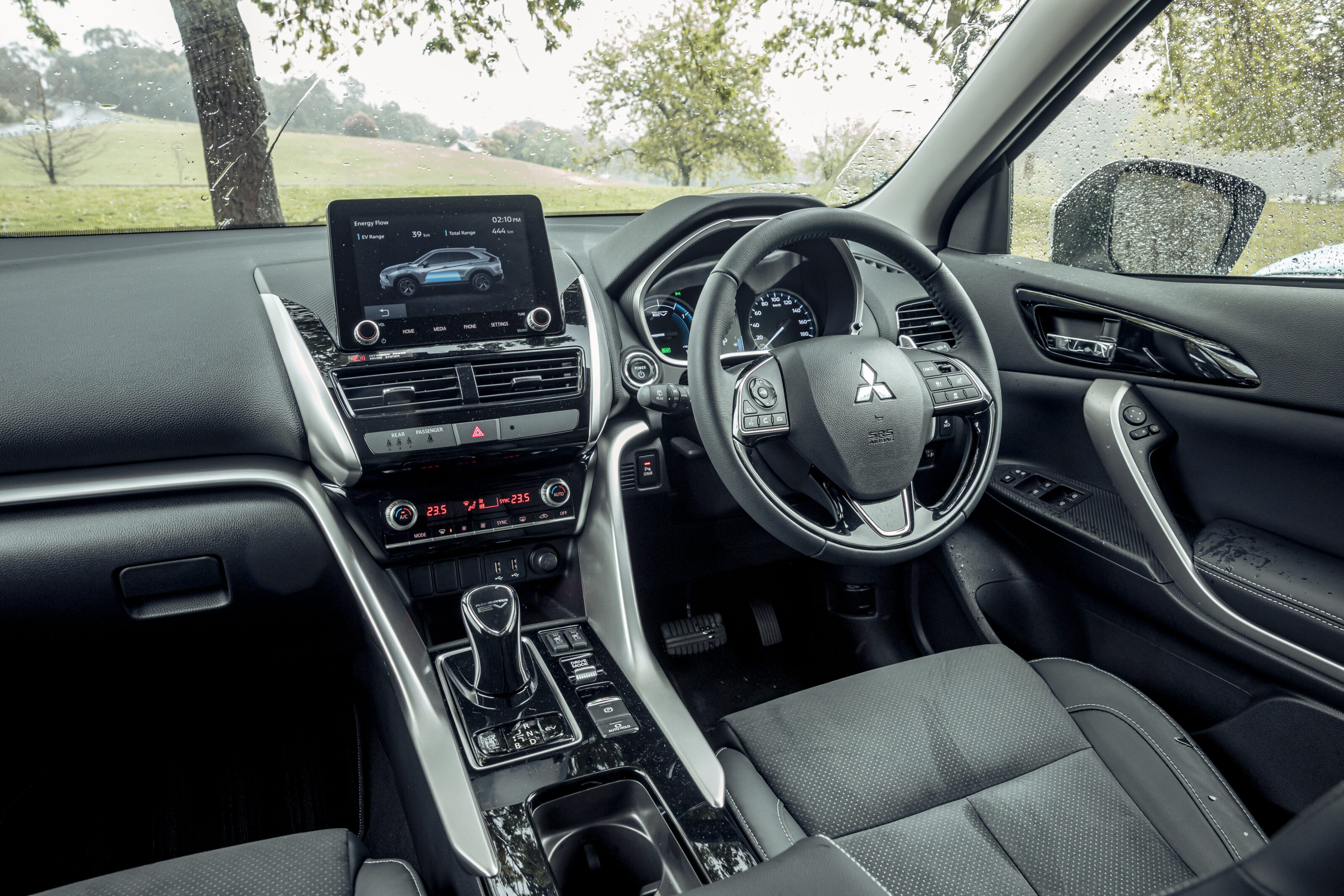
Standard features across the petrol and PHEV variants include Apple CarPlay and Android Auto, DAB+ digital radio, reversing camera, paddleshifters, climate control, two USB ports, LED daytime running lights, and cruise control – the PHEV versions gain additional buttons and displays, while the paddleshifters are used for controlling the regenerative braking rather than gearing.
The Aspire grade adds LED fog-lamps, black roof rails, heated power-folding wing mirrors, microsuede/synthetic leather seat trim, heated front seats, power-adjusted driver’s seat, an eight-speaker sound system (four more than standard), keyless entry and start, dual-zone climate control, 360-degree parking monitor, electronic parking brake, leather-trimmed steering wheel, auto-dimming rear-view mirror and adaptive cruise control.
The leather-trimmed steering wheel feels good while the front seats are comfortable, affording a good driving position and forward vision.
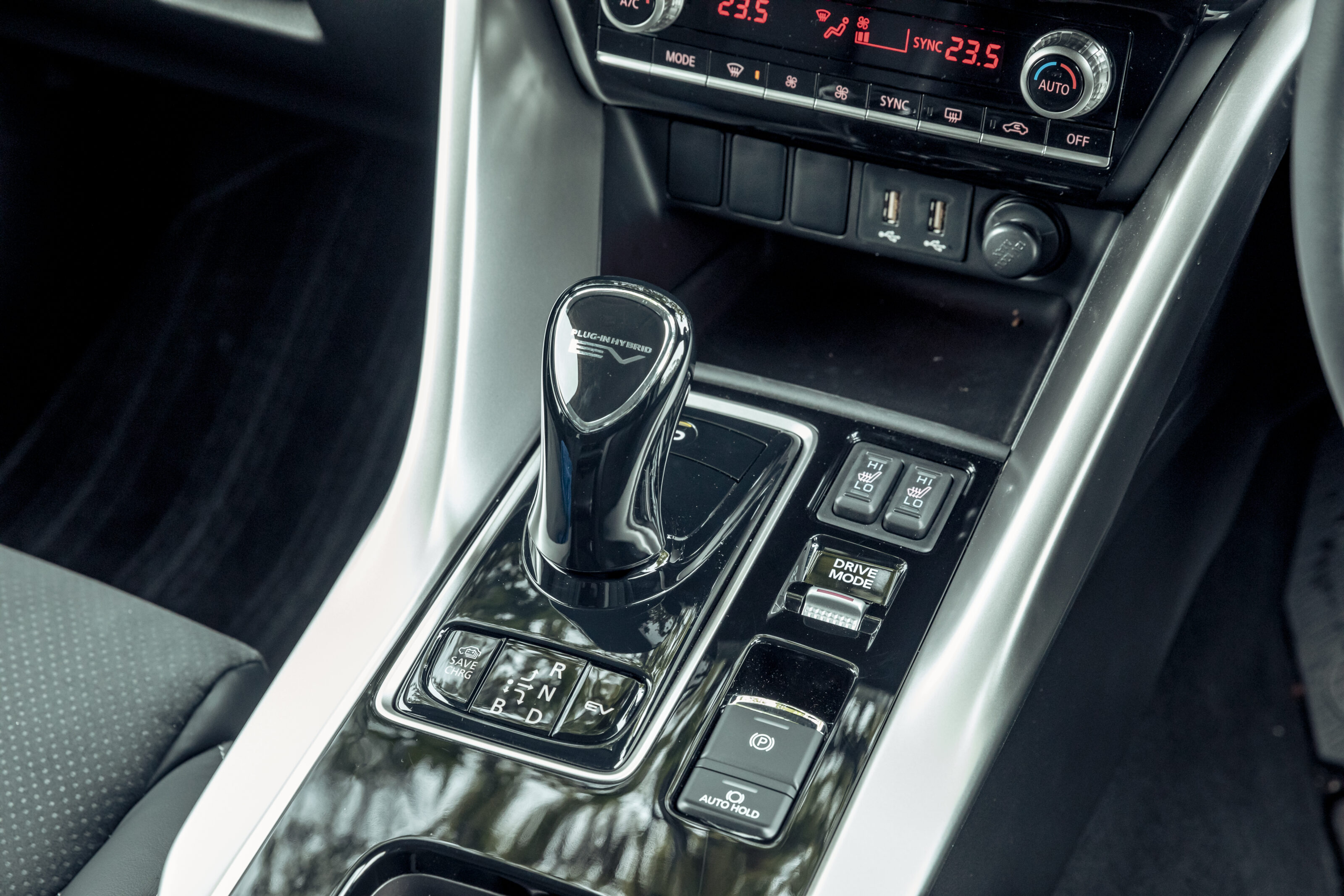
Down back, the seats are comfortable and provide good legroom. The floor of the PHEV has been raised to accommodate the battery, which makes for good front and side vision. However, the swept-back roofline can make headroom a little tight.
Even in the Aspire spec, amenities for back-seat passengers are sparse for a car costing just shy of $50,000. There are no air vents or USB ports back there, but there is a 12-volt socket. Storage is tight too, with just one map pocket, bottle holders in the doors and two cup holders in the fold-down centre armrest.
One compromise you make by choosing the PHEV is reduced boot space, which sees the floor raised by 17mm to accommodate the battery. This results in the total cargo area from 405 litres to hatchback-like 359-litres. Capacity with the rear seats down is also significantly reduced from 1149 litres to just 626.
And unlike the standard Eclipse Cross you don’t get a spare wheel – just a puncture repair kit.

While not cheap to purchase, running costs are quite low. Being a plug-in hybrid, official combined fuel economy is just 1.9L/100km, though of course there are a few caveats to that, which we’ll go into below.
The Eclipse Cross PHEV is covered by Mitsubishi’s Diamond Advantage 10-year/200,000km warranty if you service the vehicle through an authorised Mitsubishi dealer, otherwise the cover lasts five years or 100,000km. The EV drive battery is covered for eight years or 160,000km.
Another sweetener to get your vehicle maintained at a Mitsubishi service centre is capped-pricing for the duration of the warranty, with the 12-month or 15,000km service intervals mostly alternating between $299 and $399 with major services in years six, eight and 10 costing $799.
What is safety like in the Eclipse Cross Aspire PHEV?
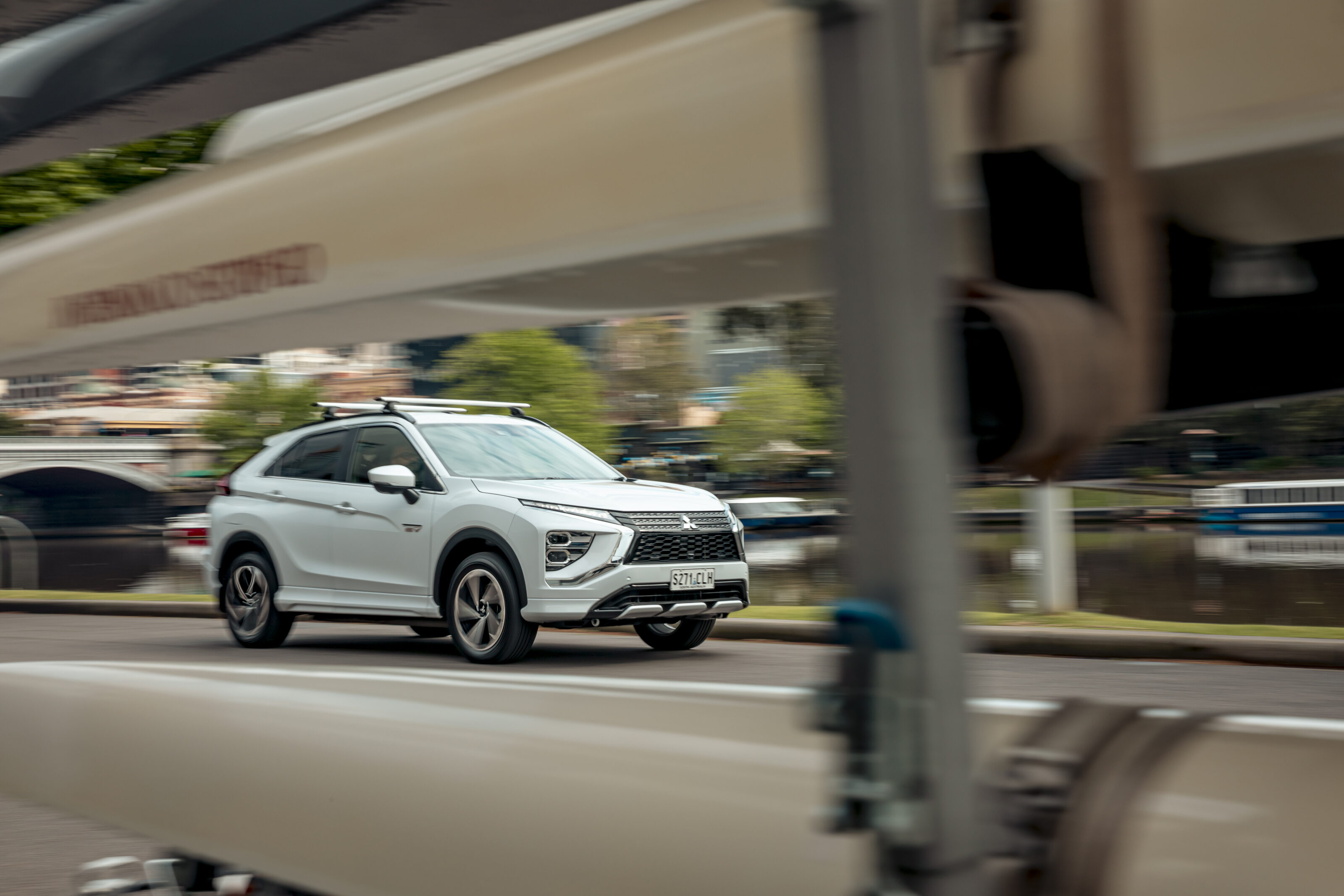
Plug-in hybrid versions of the Eclipse Cross share the five-star ANCAP rating given to petrol variants. Standard safety kit includes seven airbags, rear parking sensors, autonomous emergency braking with pedestrian detection and lane-departure warning.
The Aspire gains additional active safety and driver-assistance tech including adaptive cruise control with ‘stop and go’ function, blind-spot warning, rear cross-traffic alert, automatic high beam, front parking sensors and rain-sensing wipers.
What is the Eclipse Cross plug-in hybrid powertrain like?

Unlike the standard petrol Eclipse Cross that comes with a 110kW/250Nm 1.5-litre four-cylinder turbocharged petrol engine, this PHEV’s electrified powertrain comes with a 94kW/199Nm 2.4-litre four-cylinder Atkinson cycle petrol engine plus 60kW and 70kW electric motors that drive the front and rear axles respectively.
The electric motors are fed by a 300-volt, lithium-ion battery with a 13.8kWh capacity, which provides a claimed 55-kilometre all-electric range.
Charge this at home from a standard 10-amp socket and it will take a little under seven hours to fully charge from flat, and less than half that when using a 7kW wall box charger.
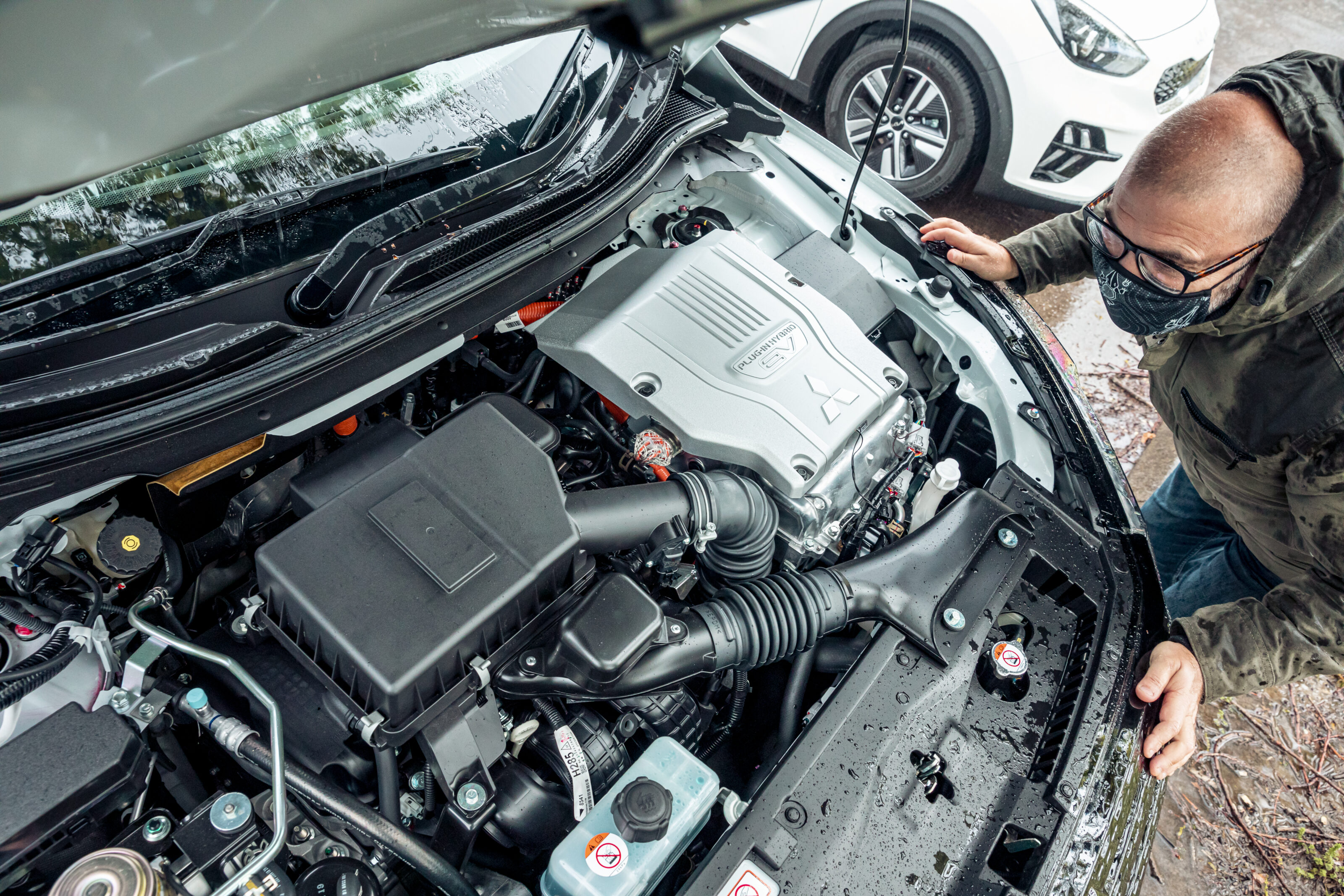
This is also one of the few plug-in hybrids that can be charged by a DC rapid charger, which will top up the battery from flat to 80 per cent in just 25 minutes.
This is a game-changer for anyone who wants to charge their battery and continue saving fuel while on the road. However, you’ll need to find a charger with a CHAdeMO plug, which is becoming increasingly uncommon. On the plus side, Mitsubishi now uses the common Type 2 socket for AC charging instead of the old Type 1 found in previous Outlander models.
Another great party trick is that it has the potential to put electricity back into the grid and even power your home, provided the required infrastructure is available.

It’s around town where you’ll get the most of the plug-in hybrid powertrain’s economic benefits.
One thing I like about Mitsubishi’s hybrid system is how easy it is to understand what the different modes do.
For shorter journeys, including the average urban commute, selecting EV mode means you’re propelled by the front and rear electric drive motors that draw current from the battery, meaning zero fuel consumption. You can travel as fast as 135km/h this way, but the battery charge won’t last very long at that speed.
Another great party trick is that it can put electricity back into the grid and even power your home.

Driving in Normal mode activates Series Hybrid operation (available from 0-70km/h), where the vehicle continues to utilise the battery to power the front and rear motors, while the petrol engine is engaged to run the generator to charge the battery while driving. This mode is also automatically activated when the engine is needed for climbing steep hills or accelerating.
Normal is the best mode to use on longer journeys and while you will use some petrol you feel like you can just let it do its thing without obsessing about fuel economy.
On one trip I drove 52km across Melbourne’s eastern suburbs starting with about 80 per cent charge in Normal mode and by the time I got home I was averaging a very frugal 2.5 litres per 100 kilometres.
A similar journey mostly relying on engine power saw fuel consumption enter double figures due to the PHEV being almost 420kg heavier than its petrol equivalent, which drinks 7.3L/100km of unleaded.
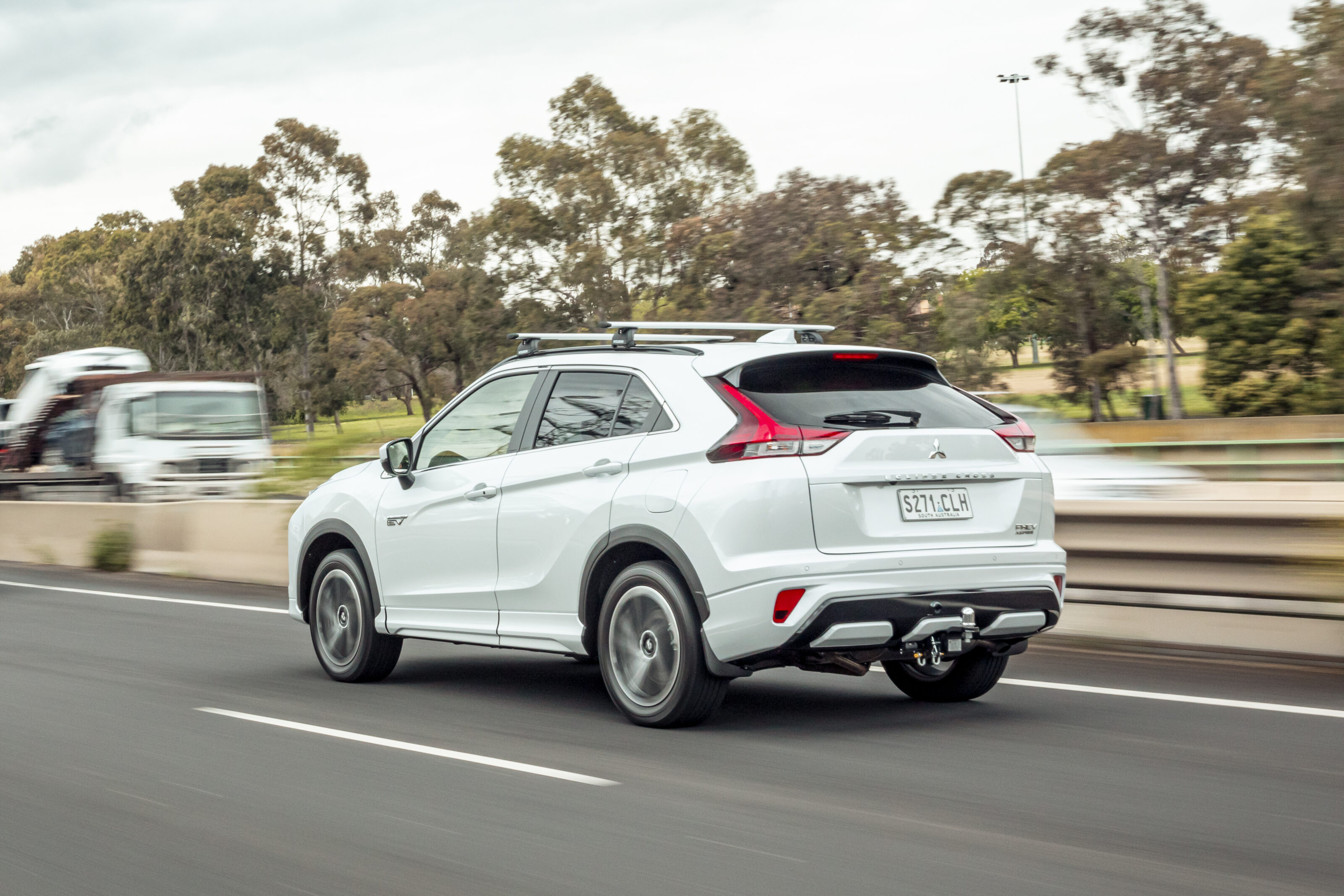
Then there is the Save mode, which maintains the current battery charge by only engaging the electric motors to take over from the engine when coasting, travelling downhill or coming to a stop. Otherwise known as Parallel Hybrid mode (only available above 70km/h) this operates like a traditional hybrid.
Charge mode uses the engine to drive the vehicle and charge the batteries at a rate as high as 80kW and is best used at highway speeds when Normal mode is more likely to engage the petrol engine anyway. This sees fuel consumption leap into double figures but at freeway speeds, you’re getting back about a kilometre of battery range for every kilometre driven, so it can even out should you then need to do some urban driving.
Another way to recoup energy is with regenerative braking, which can be adjusted using the paddleshifters. Unlike full EVs that can almost make the brake pedal redundant, the regen braking here is more subtle even at its highest setting.
What is the Eclipse Cross PHEV like to drive?
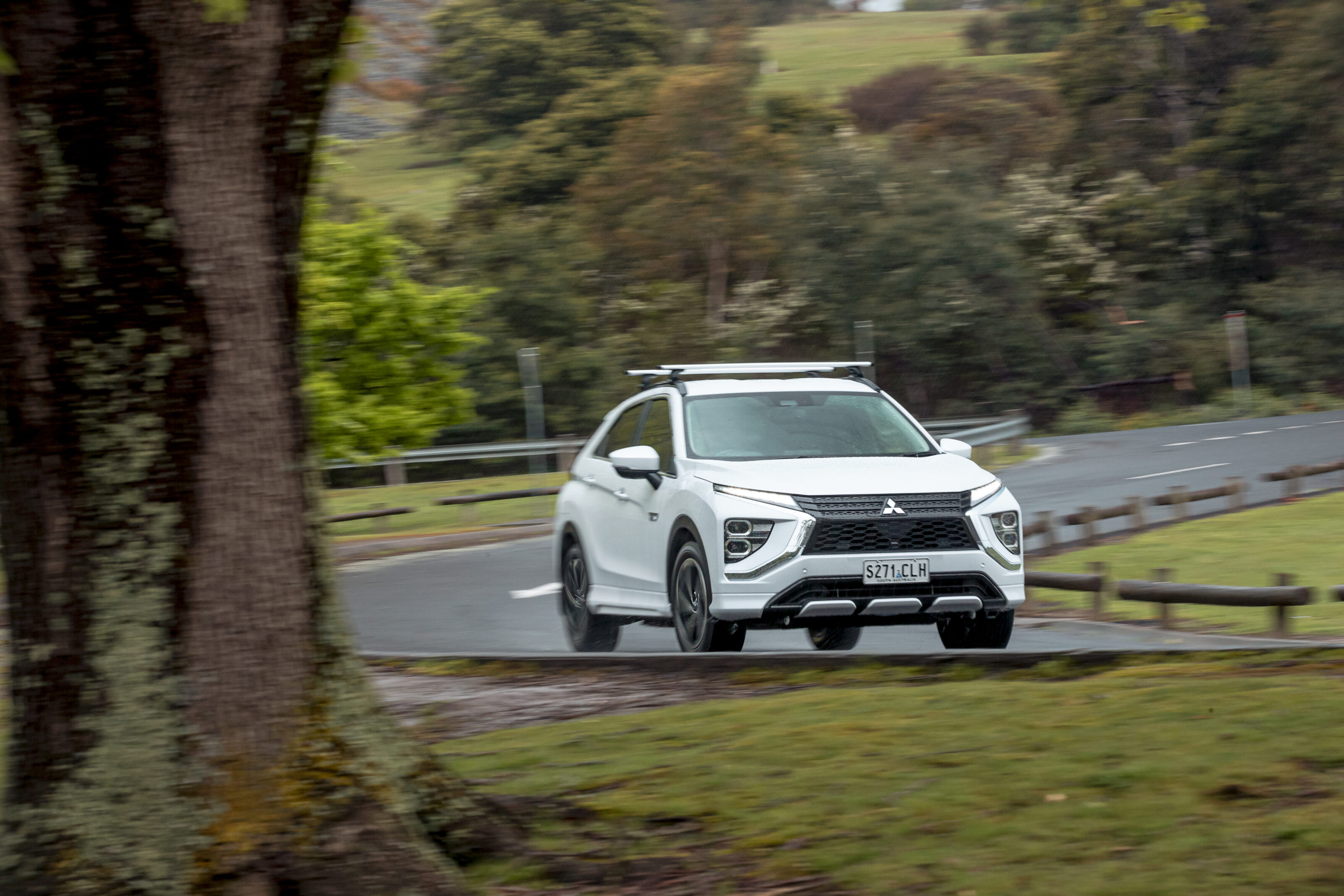
I prefer driving this to the petrol Eclipse Cross for a few reasons, not least the lack of thrashy CVT auto.
This has a single gear that operates smoothly even when driving on the petrol engine alone. Take off is quiet and you barely notice the transition between electric and petrol power.
It’s not exceptionally quick, with similar performance to the petrol version, but the acceleration feels sharper and the drive is generally effortless be it around town or out on the highway.
The suspension is a bit of a city slicker as despite having a multi-link setup at the rear, it can get busy over road imperfections and there doesn’t seem to be much play in the dampers, which often react with a jarring thud over speed humps and the like.

Handling is okay, but I expected better considering the all-wheel-drive traction and active yaw control that balances out the braking forces at the front wheels.
The steering feels light and direct, in line with the Eclipse Cross’s zippy nature, though it does lack a bit of feel.
Another thing I like is the quiet ride. Closing the door shuts out a lot of outside noise and while it’s obviously quiet in EV mode, wind, road and engine noise are well contained.
The steering feels light and direct, in line with the Eclipse Cross’s zippy nature, though it does lack a bit of feel.
VERDICT
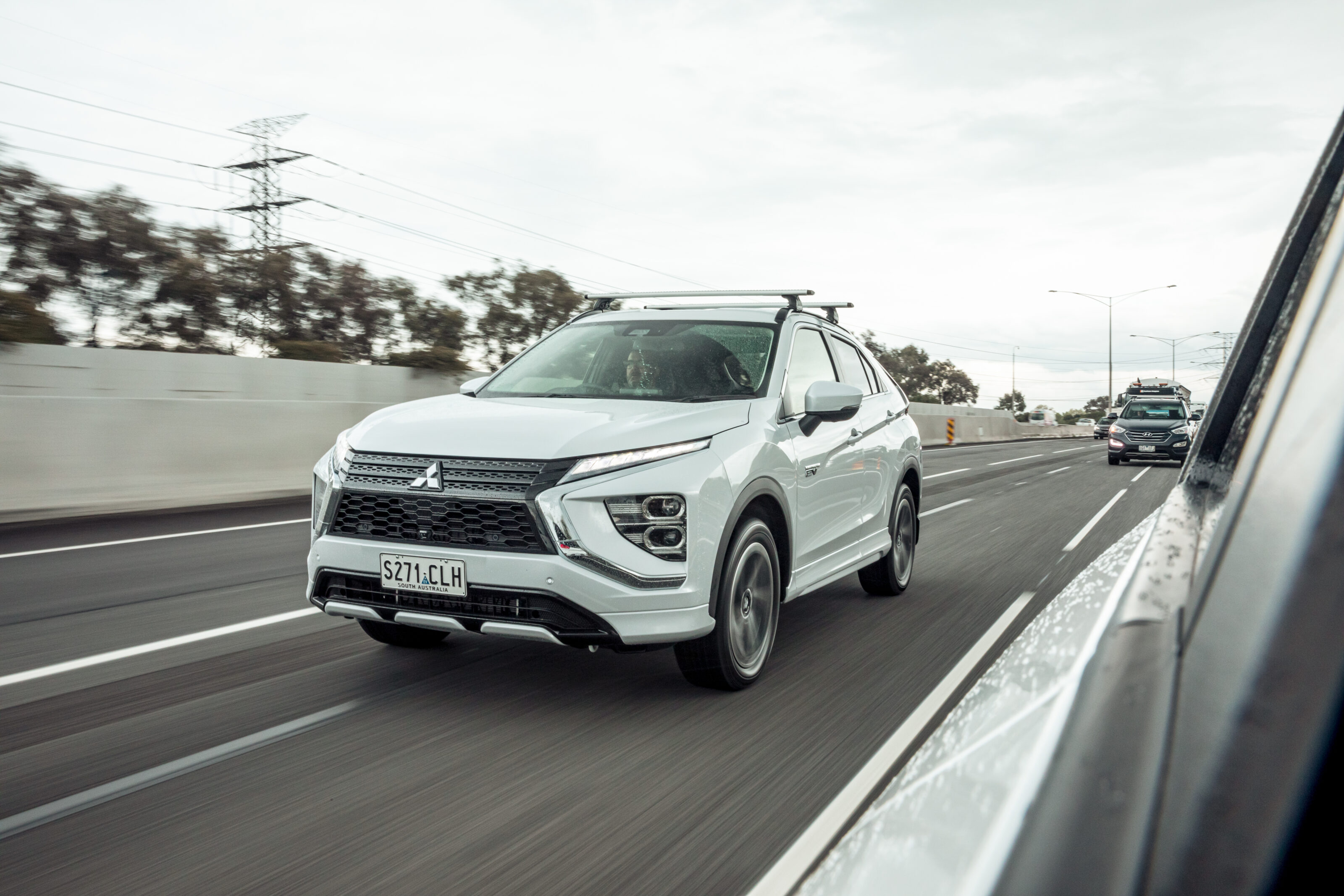
So far the MG ZS EV ($43,990 drive-away) is the only fully electric SUV that costs less than the Eclipse Cross PHEV and probably makes more sense if emissions-free driving is by far your biggest priority.
However, if you mostly drive around town and can keep the battery charged by plugging in at home and elsewhere, then the Eclipse Cross offers very frugal and even emissions-free driving in a fresher and more refined package, with the ability to confidently drive longer distances should you need to.
And while it doesn’t stand out when it comes to practicality and driveability, I’d choose the Eclipse Cross PHEV over plug-in hybrid SUV rivals such as the Kia Niro and MG HS due to its superior hybrid system that offers quicker charging and the potential to return power from the vehicle to the grid (V2G).
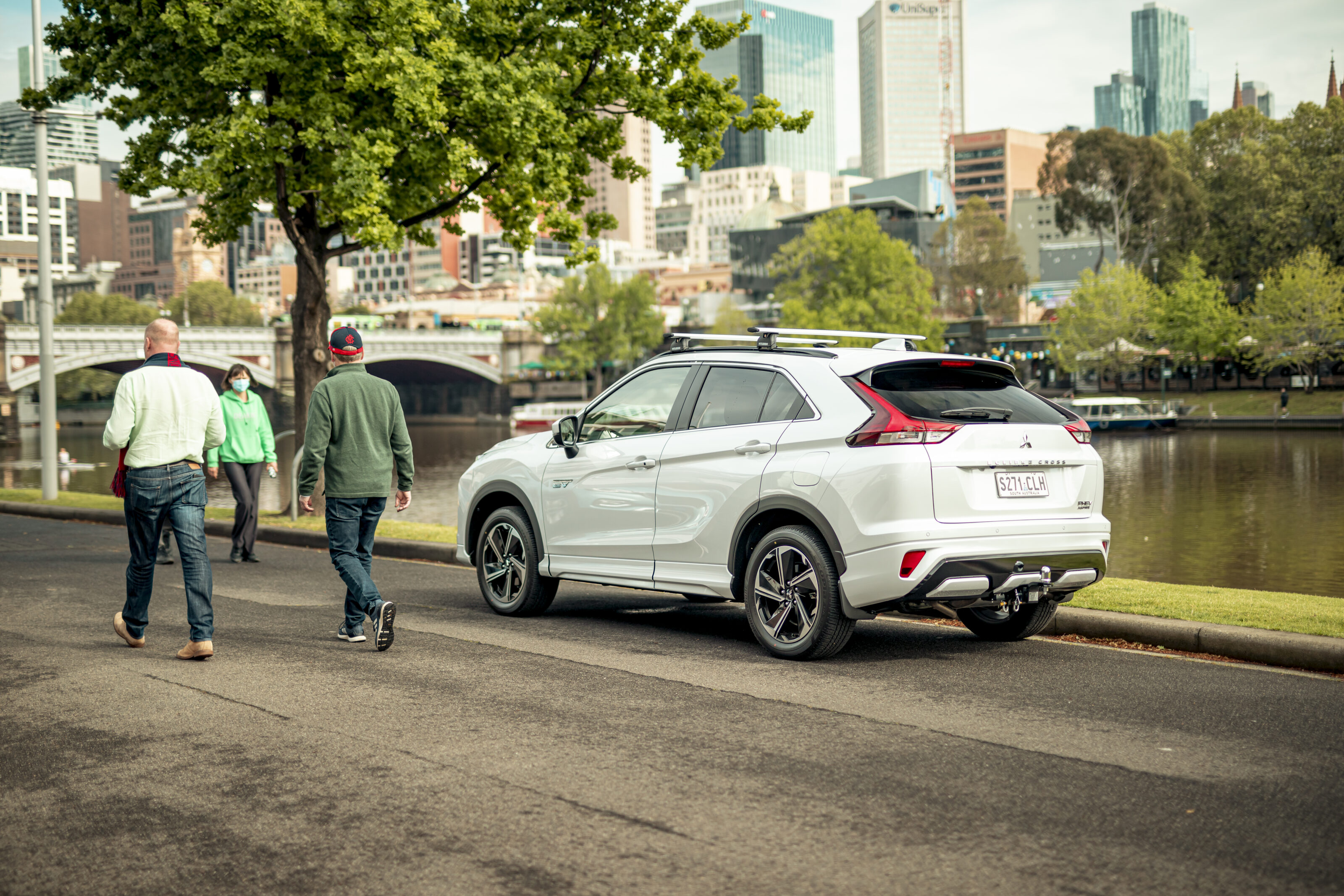
The Aspire is the sweet spot of the range, with the extra $3500 over the ES bringing enough additional safety features and creature comforts to justify the cost.
Still, $49,990 is a lot to pay for a small SUV and until more battery electric vehicles become more affordable, my money would be on an efficient turbocharged petrol or diesel crossover that beings more driver enjoyment with all the trimmings.
2021 Mitsubishi Eclipse Cross PHEV Aspire specifications
| Body | Five-door small SUV |
|---|---|
| Drive | All-wheel drive |
| Engine | 2.4-litre four-cylinder petrol plug-in hybrid |
| Transmission | Fixed single-speed |
| Power | 95kW @ 4500rpm |
| Torque | 199Nm @ 4500rpm |
| Electirc motors | 60kW front axle / 75kW rear axle |
| Battery | Lithium-ion, 300V, 13.8kWh |
| Bore x Stroke | 88.0mm x 97.0mm |
| Compression ratio | 12.0:1 |
| 0-100km/h | N/A |
| Fuel consumption | Fuel consumption |
| Weight | 1913kg (kerb) |
| Suspension | MacPherson strut (front); Multi-link (rear) |
| L/W/h | 4545/1805/1685mm |
| Wheelbase | 2670mm |
| Brakes | Ventilated discs (front); solid discs (rear) |
| Tyres | 225/55 R18 Bridgestone Ecopia |
| Wheels | 18-inch alloys |
| Price | $49,990 plus on-road costs and paint options |
Score breakdown
Things we like
- Quick charging capability
- Vehicle-to-Grid technology
- Intuitive hybrid settings/controls
- Smooth and quiet urban ride
Not so much
- Pricing still out of reach for many
- Very thirsty on engine power alone
- Busy suspension on country roads
- Small boot space
We recommend
-
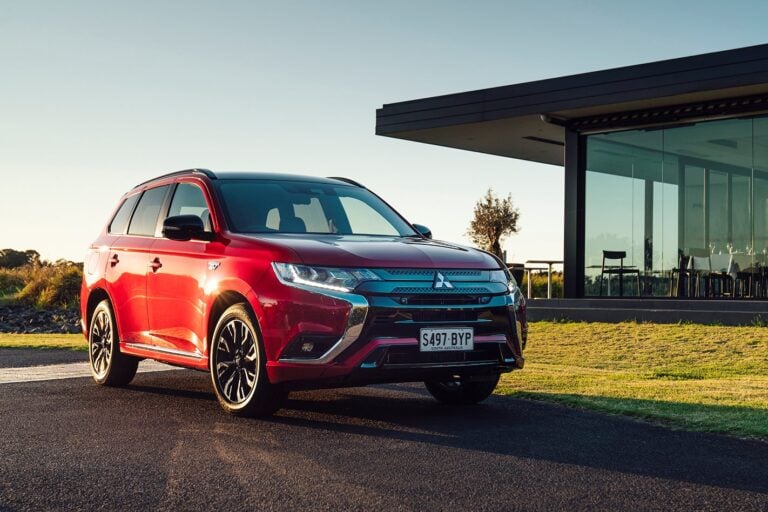 News
News2021 Mitsubishi Outlander PHEV adds vehicle-to-home battery tech
Australia’s most popular plug-in hybrid gains new mid-spec grade for 2021
-
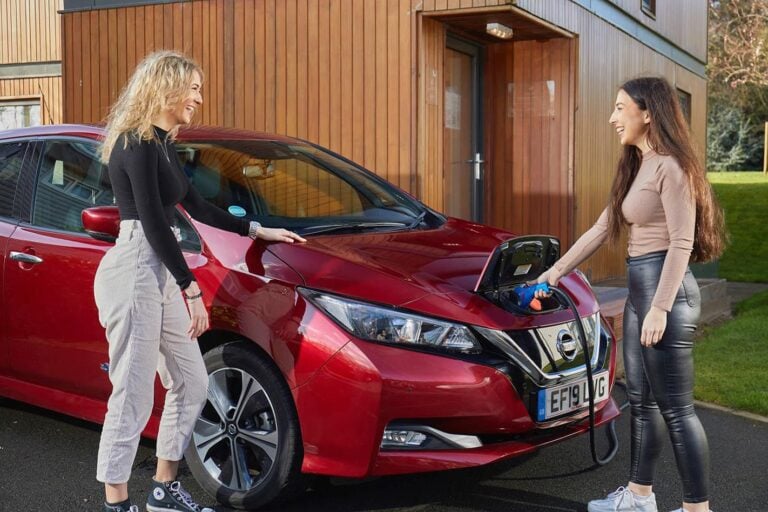 Advice
AdviceVehicle-to-grid technology explained
V2G allows an electric vehicle to return power to the grid and even run home appliances
-
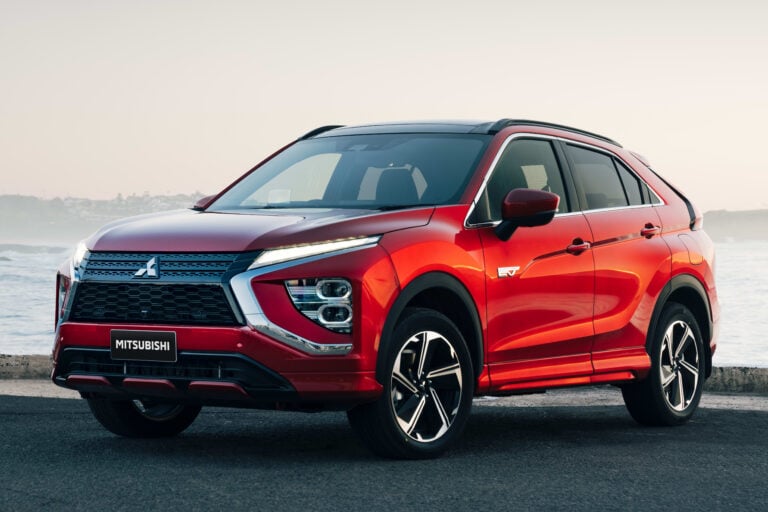 News
NewsMitsubishi Eclipse Cross PHEV pricing announced ahead of August release
Mitsubishi's Outlander PHEV gets a new companion, with a plug-in hybrid version of the new Eclipse Cross now detailed for Australia






